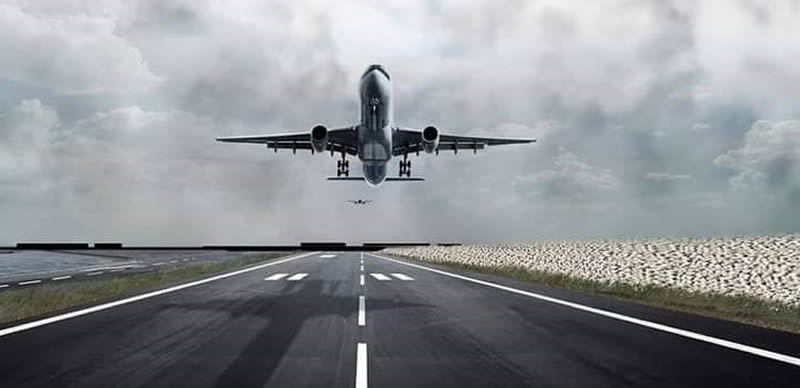
There was a time Nigerian airspace was categorised as one of the worse in Africa comparable with many others that are put in that bracket in the continent. This was a horrible period in the history of aviation in the country. The year between 1999 and 2005 was horrendous for the country as aircraft were falling off the sky. Air travel became nightmarish. Many had their hearts in their mouths any time they were billed to travel.
The ADC, Sosoliso and Bellview accidents in quick succession called for the declaration of emergency in the sector. These accidents and many others showed that Nigeria had lacked behind horribly in aviation safety. At that time, Nigeria had remained in the United States Federal Aviation Administration Category 2 status for a long time.
The appointment of Dr Olusegun Demuren led to a significant improvement in the country’s aviation industry with the help of various ministers of aviation who gave the backing of autonomy through regulations to the Nigerian Civil Aviation Authority. The NCAA was overhauled to meet the challenges of modern aviation regulations in tandem with global standards.
Nigeria through the efforts of the Demuren-led NCAA restored the country to its pride of place as the gaps to getting aviation category one status which put Nigeria in the league of big players in the global aviation industry.
The efforts of Arik Air which was Nigeria’s biggest airline at that time must be highlighted. Arik served as the Guinea pig to get category status for Nigeria; a situation that prompted its designation to New York and other destinations across the world.
One agency that had continued to drag down the industry or one that has not matched the fast pace of other agencies like the Accident Investigation Bureau and the Nigerian Airspace Management Agency is the Federal Airports Authority of Nigeria. Although the agency has recorded some feats, it is very slow to meet some of the challenges of aviation in terms of security.
One of the drawbacks of the agency is that it has a lot of airports it is handling amid depleting revenue. Only four airports generate the bulk of revenue for the maintenance of over 30 aerodromes.
The NAMA stands out. The remarkable work of past Chief Executive Officers particularly, the immediate past Managing Director, Capt. Folayele Akinkuotu, is worth mentioning. The incumbent NAMA MD, Mr Lawrence Pwajok has carried on seamless and breaking new ground with the provision of modern and seamless navigation safety tools.
For several years, most of the navigational facilities were not only obsolete but grossly inadequate and posed serious danger to air travellers. Pilots were visibly angry over poor navaids at most of the airports. Aerodromes suffered from long periods of neglect, poor planning and wanton corruption that left the sector in a precarious situation.
Pilots recalled their experiences any time they flew within the country’s airspace. They found it very difficult at a point to establish communication with the control tower because of the lack of effective radio communication coverage.
The poor state of the controller/pilot VHF communication coverage of the country’s airspace was glaring. Users were piqued that if navigational aids could work in such places as Togo, Ghana and Sao Tome, they wondered why the same equipment couldn’t work in Nigeria.
The careful planning by the Ministry of Aviation and NAMA to change the narrative of bad news as it affects the country’s airspace safety has seen a massive investment of over N32bn and another $12.9m to overhaul the airspace architecture.
Pwajok stated that while NAMA took note of the complaints of the umbrella body of air traffic controllers, the National Air Traffic Controllers Association’s wishes to itemise the several ongoing and completed projects across the country’s airports aimed at safety, efficiency, capacity, and environment.
The NAMA chief stated that there is the ongoing deployment of surface movement radar and ground control systems at Lagos and Abuja completed in the first quarter of 2022, adding that the ongoing deployment of three-dimensional virtual tower simulators in Lagos was completed by December 2021.
The agency has also deployed a traffic sequencing manager—arrival manager and departure manager with an automated clearance delivery system at Lagos and Abuja scheduled completed in December 2021, and the deployment of Wide Area Multilateration Surveillance System for low-flying helicopters in the Gulf of Guinea completed in February 2022. This project cost over N3bn.
Others are the procurement of two new mobile control towers delivered for Lagos and Abuja and commissioned in June 2021, worth over N1.7bn, procurement of two additional mobile control towers for Kano and Port Harcourt delivered December 2021, also worth over N1.7bn for contingency use.
Equally provided according are the automation of the Katsina control tower completed in September 2020, automation of the Zaria Control Tower completed in October 2020, procurement of new flight calibration aircraft delivered in August 2019, upgrade of the Safe Tower Project at Lagos, Abuja, Kano and Port Harcourt worth over N13bn, that would provide software and hardware upgrades including new voice communication and control systems and furniture, is in progress.
The upgrade and automation of 12 control towers nationwide are also expected to provide voice communication systems, ATC electronic strip management systems are in progress and expected completion is in 2022.
Procurement of control tower cabins for five new control towers including Kaduna and Enugu airports scheduled for completion by December 2022 with the factory acceptance test of the equipment done from October 20 -24, 2021 conducted in the United Kingdom by the Ministry of Aviation, the FAAN and NAMA officials.
NAMA has successfully Installed Cat III ILS systems at Lagos 18R and Abuja Runway 22 in February 2020. The same thing has been done for Lagos 18R, Kano, Kaduna, Benin, Jos, Enugu, Port-Harcourt, Minna, Maiduguri, Sokoto, Yola, Akure, Ilorin, Zaria between 2020 and 2021. There is also the successful installation of a new Doppler VOR at Lagos, Kano, Jos, Maiduguri, Benin, Ilorin, Yola, Minna and Port Harcourt between 2020 and 2021.
We concluded the recruitment of 40 air traffic control cadets in two batches currently undergoing ATC training at the Nigerian College of Technology, Zaria. There is ongoing reconditioning and rehabilitation of the Total Radar Coverage expected to be completed this year. The ongoing AIS Automation Project was scheduled for completion in December 2021 with the VSATs installed in 24 airports and the ATS Message Handling System fully installed at Lagos and Kano to replace the old AFTN.
Performance-Based Navigation had been successfully implemented in 32 airports with RNAV approach flight procedures just as PBN Standard Instrument Departure Routes and Standard Arrival Routes (SIDs and STARs) have been implemented at Lagos, Abuja, Kano, and Port Harcourt.
PBN BARO VNAV approaches with vertical guidance have been implemented at Lagos, Abuja, and Kano, while Port Harcourt and Enugu are scheduled for completion by December 2021. The agency has successfully Implemented 20 PBN RNAV regional routes across Nigeria to enhance the efficiency of flight operations.
Pwajok said, “There are a lot of things we have achieved. We completed on-the-job Training for ATC License/Ratings for over 200 Air Traffic Controllers on Aerodrome, Approach, and Area Airways Radar and Non-Radar Control trained 200 air traffic controllers and engineers on safety management systems in 2019, conducted specialized training for air traffic controllers on PBN, air traffic flow management, Airport Collaborative Decision Making, Controller Pilot Data Link Communication System, and Strategic Planning for Air Traffic Management in Dubai, in 2020”.
“There is the procurement of Search and Rescue equipment for Lagos, Abuja, Kano, Port Harcourt, Enugu, Ilorin, Sokoto, and Maiduguri in 2020, just as we successfully conducted WGS 84 Resurvey at 15 airports between 2020 and 2021 to enhance the accuracy of terrain and obstacle data for the safety of flight operations.”
The agency successfully reviewed flight procedures at 19 airports between 2020 and 2021 to enhance the safety and efficiency of flight operations, and installation of Stand-alone Jotron Radio systems at Lagos, Abuja, Kano, and Port Harcourt to provide backup air/ground voice communication systems.
While there is a remarkable improvement in air traffic management in the country with installed facilities, however, the agency is urged not to rest on its oars to ensure that there is consistent improvement in the country’s airspace surveillance.
- Ola, an aviation consultant, writes from Lagos; 08149087637




